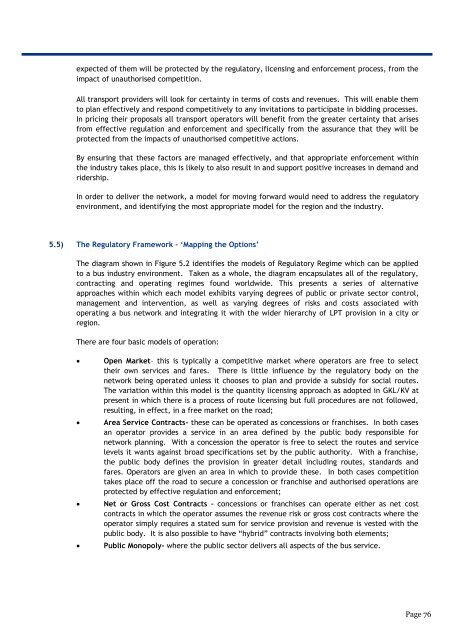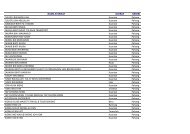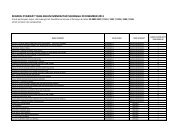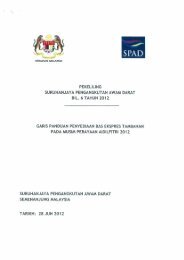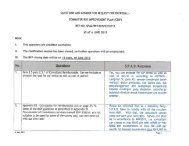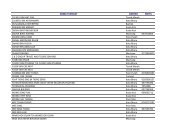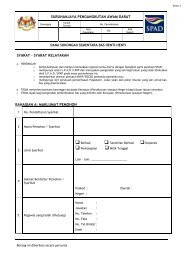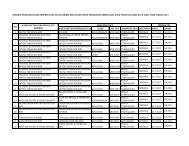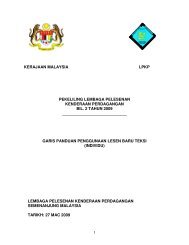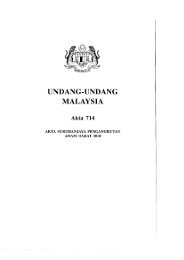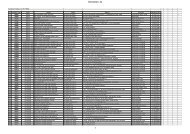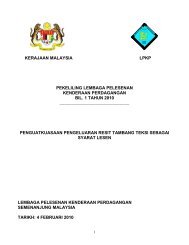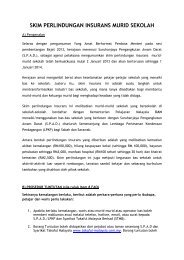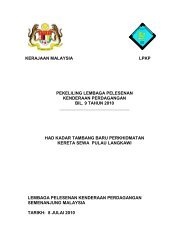Contents - SPAD
Contents - SPAD
Contents - SPAD
You also want an ePaper? Increase the reach of your titles
YUMPU automatically turns print PDFs into web optimized ePapers that Google loves.
expected of them will be protected by the regulatory, licensing and enforcement process, from the<br />
impact of unauthorised competition.<br />
All transport providers will look for certainty in terms of costs and revenues. This will enable them<br />
to plan effectively and respond competitively to any invitations to participate in bidding processes.<br />
In pricing their proposals all transport operators will benefit from the greater certainty that arises<br />
from effective regulation and enforcement and specifically from the assurance that they will be<br />
protected from the impacts of unauthorised competitive actions.<br />
By ensuring that these factors are managed effectively, and that appropriate enforcement within<br />
the industry takes place, this is likely to also result in and support positive increases in demand and<br />
ridership.<br />
In order to deliver the network, a model for moving forward would need to address the regulatory<br />
environment, and identifying the most appropriate model for the region and the industry.<br />
5.5) The Regulatory Framework – „Mapping the Options‟<br />
The diagram shown in Figure 5.2 identifies the models of Regulatory Regime which can be applied<br />
to a bus industry environment. Taken as a whole, the diagram encapsulates all of the regulatory,<br />
contracting and operating regimes found worldwide. This presents a series of alternative<br />
approaches within which each model exhibits varying degrees of public or private sector control,<br />
management and intervention, as well as varying degrees of risks and costs associated with<br />
operating a bus network and integrating it with the wider hierarchy of LPT provision in a city or<br />
region.<br />
There are four basic models of operation:<br />
<br />
<br />
<br />
<br />
Open Market– this is typically a competitive market where operators are free to select<br />
their own services and fares. There is little influence by the regulatory body on the<br />
network being operated unless it chooses to plan and provide a subsidy for social routes.<br />
The variation within this model is the quantity licensing approach as adopted in GKL/KV at<br />
present in which there is a process of route licensing but full procedures are not followed,<br />
resulting, in effect, in a free market on the road;<br />
Area Service Contracts- these can be operated as concessions or franchises. In both cases<br />
an operator provides a service in an area defined by the public body responsible for<br />
network planning. With a concession the operator is free to select the routes and service<br />
levels it wants against broad specifications set by the public authority. With a franchise,<br />
the public body defines the provision in greater detail including routes, standards and<br />
fares. Operators are given an area in which to provide these. In both cases competition<br />
takes place off the road to secure a concession or franchise and authorised operations are<br />
protected by effective regulation and enforcement;<br />
Net or Gross Cost Contracts – concessions or franchises can operate either as net cost<br />
contracts in which the operator assumes the revenue risk or gross cost contracts where the<br />
operator simply requires a stated sum for service provision and revenue is vested with the<br />
public body. It is also possible to have “hybrid” contracts involving both elements;<br />
Public Monopoly- where the public sector delivers all aspects of the bus service.<br />
Page 76


